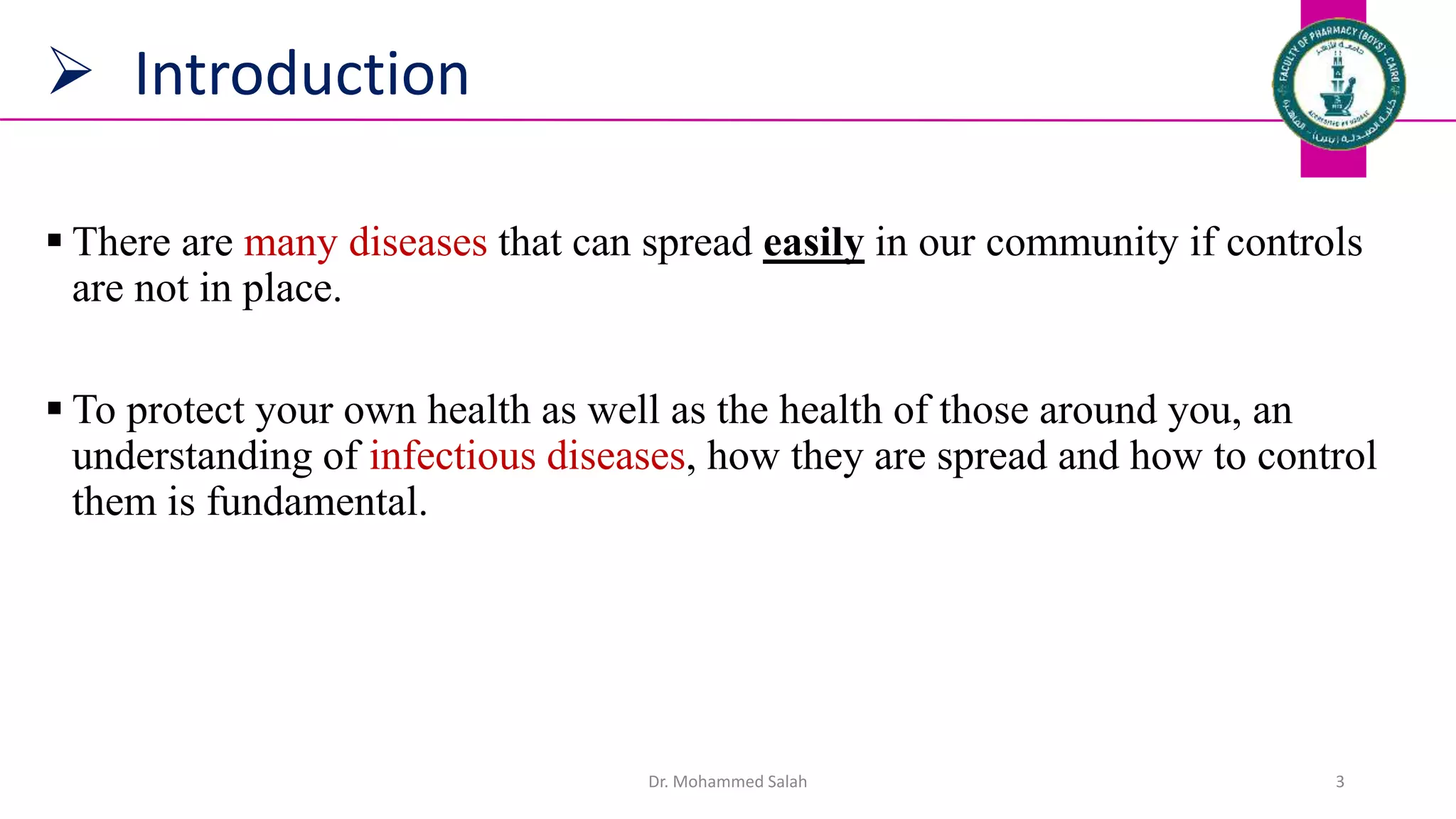The document outlines key aspects of infection prevention and control (IPC), including definitions, mechanisms of infection spread, and strategies to break the chain of infection. It discusses healthcare-associated infections (HAIs) and their sources, and explains the standard infection control precautions (SICPs) that should be followed at all times, such as proper hand hygiene techniques and use of personal protective equipment. The 10 elements of SICPs aim to safely manage the healthcare environment and equipment, blood/body fluids, linen and waste to prevent transmission of infectious agents between patients and healthcare workers.



































